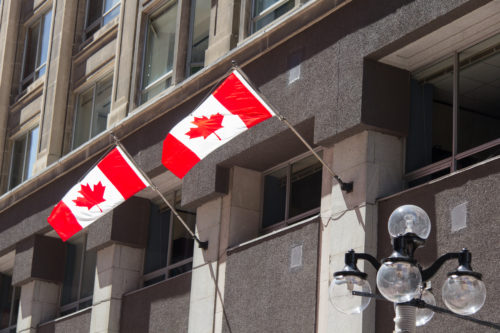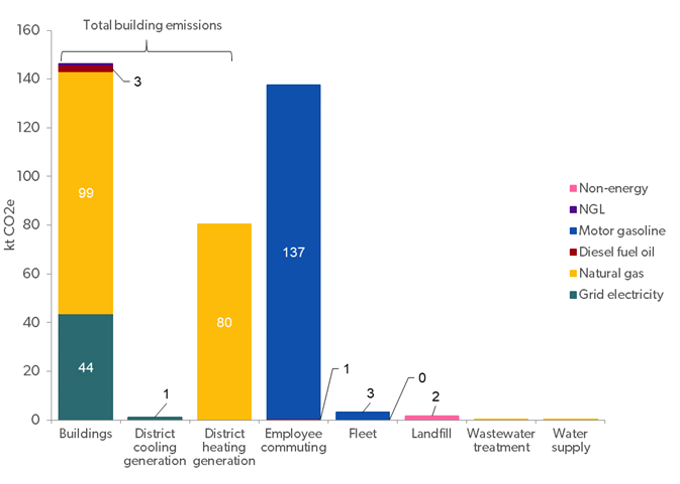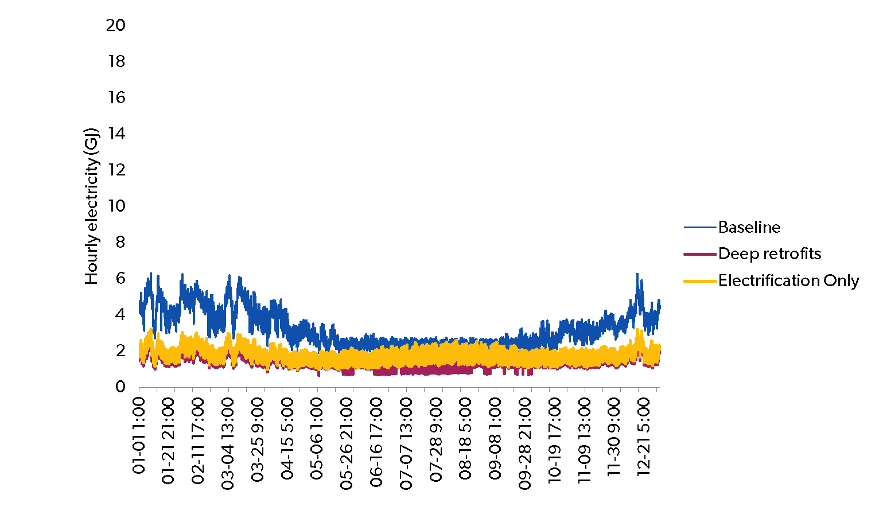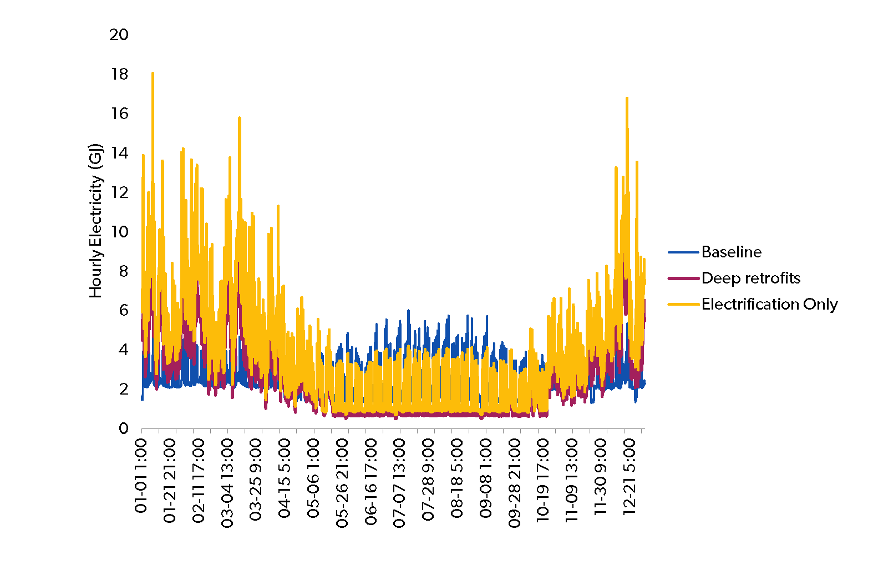
The Electrification and Deep Retrofit Potential of Canadian Federal Buildings
In the face of the climate crisis, organizations are looking to electrification and renewable energy as a way to get buildings, energy systems, and vehicles off of fossil fuels. But fears abound that plugging too many things into the grid could overwhelm the system and lead to blackouts.
Over the past two years, RMI, SSG, and whatIf? Technologies explored this challenge as a part of a consulting project for the Government of Canada to create a pathway to reduce its operational emissions in the National Capital Region to net zero by 2050. Our analysis suggests that by combining electrification with deep energy efficiency retrofits, we can stave off an increase in building-level electricity demand and demand peaks on the electric grid.
Why the Canadian Government Needs to Fuel Switch
In order to decarbonize, the Government of Canada needs to switch away from natural gas for heating buildings. In 2016, the federal government’s operations in the National Capital Region (NCR) emitted 370 kilotons of CO2e (carbon dioxide equivalent). More than 60 percent of emissions from the federal government’s operations came from buildings, most of it from burning natural gas for heating.

Federal buildings tend to be old, drafty, and overdue for an upgrade. Nearly 50 percent of the government’s building floor area is classified as “in poor or critical condition.” The low emissions intensity of the electricity in Ontario and Quebec—which is powered by hydro—makes electrification paired with high-performance building envelope upgrades an ideal solution to simultaneously upgrade and decarbonize buildings.
Modeling shows that the cost to decarbonize the federal building stock is just 4 percent above what must be spent to maintain the current building stock over the next three decades, as they fall into further disrepair.
The Promise of Heat Pumps
The government’s building upgrades can include switching from natural gas to electric heat pumps that use the air, water, or ground as a heat source, or sink, to heat buildings in the winter and cool them in the summer. While building professionals once thought heat pumps to be ineffective in colder climates, the technology has improved by leaps and bounds. A wide range of heat pumps is now available for colder climates and commercial-scale use.
To help the Canadian government figure out how to use heat pumps in more than 2,000 buildings in the Ottawa-Gatineau region, RMI used its Portfolio Energy Optimization modeling approach. Portfolio Energy Optimization aggregates buildings across the portfolio while customizing the energy models per building to represent existing conditions in each facility. We considered different types of heat pump applications bundled with high-performance thermal envelope and energy efficiency upgrades tailored to residential, commercial, and mixed-use buildings. The results were then fed into the CityInSight model, developed by whatIf? and SSG, to assess energy consumption and emissions across the entire building portfolio out to 2050, accounting for changing costs, emissions factors, and portfolio-wide asset management plans.
This modeling demonstrated that decarbonizing the federal government building portfolio in the NCR is technically and economically feasible over the next three decades. If combined with deep energy efficiency retrofits like building envelope upgrades, heating electrification of nearly all of the building stock would cost CA$850 million more than planned building upgrades between 2020 and 2050, while saving about CA$700 million in energy costs and nearly eliminating emissions. The net cost of CA$150 million is a drop in the bucket compared with how much the government already spends on building operations. The Canadian National Capital Region has a pivotal opportunity to transform its federal buildings portfolio while minimizing the impact of demand growth on the electric grid.
Building Decarbonization and Electric Demand
The grid can manage large-scale electrification of heating only if it’s paired with measures that manage demand peaks. That’s where building envelope retrofits—upgrading windows, walls, and roofs—come in. Together, these strategies change the profile and timing of building electricity consumption by limiting peak demand.
For buildings on the Ottawa side of the NCR, envelope upgrades can reduce peak demand by limiting heat gains and losses through insulation and lower air infiltration, while electrification may shift these peaks from the summer (cooling demand) to the winter (heating demand). Our models suggest that the heat pumps and envelope upgrades, along with other efficiency measures, will lead to a post-retrofit winter peak that is not much higher than the original summer peak. The net impact of retrofitting modeled buildings in Ottawa with high-performance envelopes and heat pumps on the electricity demand profile is illustrated in the figure below.
On the Gatineau side, most buildings are already heated with electricity, and electricity demand peaks in the winter. Retrofitting these buildings with envelope upgrades and heat pumps does not change the demand load profile through the year, but it reduces the total peak on the electricity grid by up to 25 percent.

Our analysis shows that, when combined with efficiency retrofits, electrification of buildings using heat pumps can shift the time that electricity demand peaks and may even reduce annual electricity demand. As organizations and utilities plan for the future of electrification, efficiency is a critical way to minimize peak demand and make the transition to zero-carbon buildings viable.

